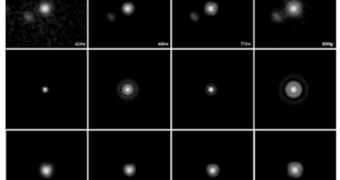Ever since scientists first attempted to combine quantum mechanics with the theory of general relativity, there were those among them who argued that space and time (spacetime) was quantized at the Planck scale. As far back as the 1960s, expert John Wheeler devised a new word to explain the quantization of the structure of the Universe at a distance of around 10^-35 meters, and the word was quantum foam. Experts have since tried to find methods of determining and observing this structure, but their best efforts have been in vain.
A group of experts from the University of North Carolina, in the United States, believes that today's most powerful optical telescopes may be very close to finding the quantum foam, or at least to placing it within certain well-defined limits. Wayne Christiansen, the leader of the new investigation, says that the foam could soon be discovered, and then carefully analyzed. He also emphasizes the fact that a foam structure of the Universe would mean that a fundamental limit is placed on the accuracy with which distances can be measured, Technology Review reports.
In practice, this means that not even light-based measurements will be considered accurate. As they move through the foam, photon beams accumulate foam of their own, which taints the validity and accuracy of the final measurement results. “In effect, spacetime foam creates a 'seeing disk,'” Christiansen says. He adds that images of certain distant point sources should contain all the relevant information needed to extract visible photos of the foam, his group believes. The only issue that appears to be hindering this effort is the fact that the foam is at a very small scale, and therefore some very, very distant cosmic objects need to be imaged, in order to get the desired result.
The expert says that the Hubble telescope has already done so, when it imaged redshift quasars, some of the most distant objects ever discovered in the early Universe. The structures were discovered in one of Hubble's Ultra Deep Field photographs. The scientist says that some of the quasars are blurred in a way completely consistent with a number of computer models of how the quantum foam would distort images of such distant objects. “The blurring is at a level consistent with a spacetime foam model,” Christiansen's team believes.
A number of studies will be conducted using the Hubble space telescope, in an attempt to answer several questions about the structures, such as if they are indeed point sources, or if the scattering is caused by other explainable phenomena. In addition to the famous instrument, the European Southern Observatory (ESO) is also working on building the Very Large Telescope (VLT) Interferometer, an observation tool that will allow highly precise, very distant measurements of the early Universe.

 14 DAY TRIAL //
14 DAY TRIAL //